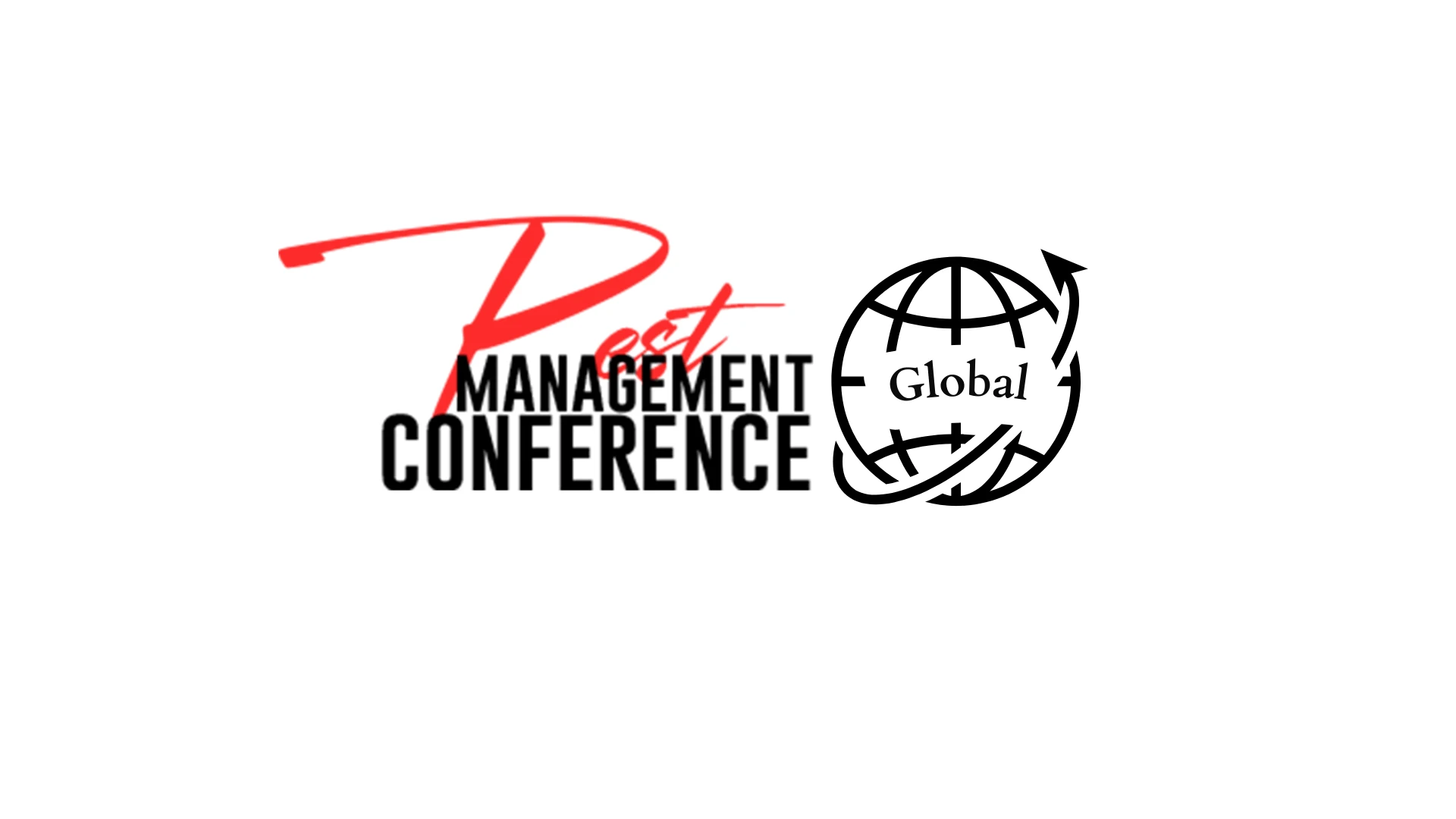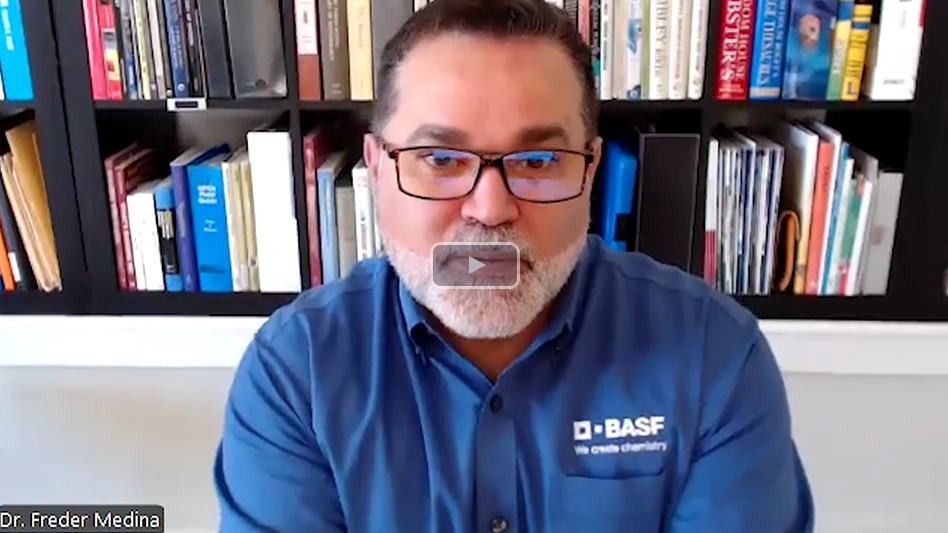Kevin Kordek knew he wanted new digs for his company for at least five years before the Virginia Beach, Va., business actually got them. The leased office space was getting cramped and the building was run down and in need of a facelift. However, Kordek, president of A-Active Termite & Pest Control Company, wasn’t yet ready to buy his own property. So he looked, waited and eventually found just the right opportunity.
As Kordek and others have learned, making the decision to move your pest control business, purchase property or even to renovate an existing location certainly isn’t an easy one. Besides being costly, there are many variables to consider, and there are many risks involved. You might need to hire professionals to help with the planning and design, and once the project is underway, unforeseen challenges are likely to crop up, taking valuable time away from your core business. But for many companies, there comes a point in time when it’s simply the right thing to do.
QUALITY SURROUNDINGS. One company well accustomed to building its own facilities is Cook’s Pest Control, Decatur, Ala. Cooks owns the majority of its properties, most of which have been built specifically for the business, says Joey Harris, vice president of sales and service.
“You can talk quality service,” Harris said, “but if you don’t have a quality facility, that message that you send to technicians and sales people about quality just kind of goes out the window.”
Cook’s philosophy began with founder John Cook Sr., who has a degree in architecture. “He knows what it takes for a building to be successful to really maximize our efforts in the pest control industry,” Harris said.
Harris points out some of the considerations that go into designing Cook’s buildings are an understanding of how the business flows, how vehicles access and park at the building, and the location of sales personnel in relation to the service side of the business. Cook’s also structures its facilities to accommodate customers and visitors who come in to pay bills and ask questions.
A-Active’s Kordek also knows the value of having a quality work atmosphere. He moved into his new office two years ago. “We literally had grown out of the other facility,” he said. Furthermore, the building was in need of repairs, and wasn’t being maintained. That began to play a major role in Kordek’s decision to move. “The physical environment does influence the attitudes of the people in the company,” he said. “The landlord did not want to keep the property up to a level that was consistent with the rest of the attitudes of the business.”
Kordek might have left his previous location sooner if it wasn’t for his desire to first grow his business, which he purchased in 1995. Furthermore, land in Virginia Beach is expensive, and all surplus money was being invested back in the business. “That building was getting us by,” Kordek said of his old location.
Kordek tried to improve the appearance of the old office by painting and installing new carpeting, but, “the surroundings still were just totally inconsistent with our philosophy, which is quality.” In addition, the building didn’t flow well and had multiple little spaces.
“We did the best we could for 10 years,” he said. After five years of looking, Kordek found an opportunity. “Finally a whole new area of land opened up,” he said. The resulting facility was built from the ground up. “We were able to create an office environment that was unique to our needs,” Kordek said. “The physical surroundings have affected our business in a positive way I would have never dreamed possible.”
Of course, Kordek had a team of professionals to help him. Besides hiring his wife (who is an interior designer), Kordek also brought in an architect and a civil engineer, while he served as the general contractor. He credits his banker with arranging financing, backed in part by a U.S. Small Business Administration funding program, that he says saved him close to $100,000 in fees and interest.
One of the most important rooms in A-Active’s new building is its training room, which almost ended up being too small. Kordek originally planned to have a large computer room, but after the framing went up, Kordek took a good look at the space and realized that such a large area wasn’t necessary for today’s smaller computers and servers. He also saw that the training room was going to be far too small. He decided to do away with the computer room, in favor of a much larger training and conference room.
“We went from a lot of smaller spaces to wide open spaces and modular furniture,” said Kordek. He explained that the cost savings in not framing in extra rooms paid for about half the cost of modular furniture. Considering that he would have had to purchase furniture anyway, making the change didn’t increase his overall cost. “The thing is, it gave us a lot more versatility,” he said.
During the process, Kordek spent a lot of time mulling over proposed designs, then walking away. “I bet you we did 50 different what-ifs,” he said. However, Kordek pointed out, he had to be on the scene at critical defining moments, thus missing out on other aspects of running his business.
Construction changes were relatively easy for Kordek, in part because his building uses all-steel framing held together by screws. So even if changes were made, the building materials didn’t go to waste.
DESIGNING THE SPACE. Phillip Cooper, president, Cooper Pest Solutions, Lawrenceville, N.J., designed his building addition around his company’s mission statement: “to WOW our clients, WOW our team mates, WOW our community, WOW our service partners and WOW the bottom line.”
“And the building does all of that,” Cooper said.
Cooper recently marked its third year in a new corporate headquarters, which is the company’s old building, with a major addition. The single-story building features 26-foot high ceilings and what he calls a “WOW” room located in the heart of the building. It’s a room designed for the staff to meet and congregate. “People just go there and hang out,” says Cooper. The company’s mail room, printing area and cafeteria also are located in the WOW room.
“That was the first room we designed and everything else was designed around that,” Cooper said. “That was the most important room in the building.” Another highlight of the building is the centrally located conference room, which doubles as a “crash room.” It remains powered in the event of an outage, and features additional phone and network connections.
Cooper decided to expand his building primarily out of the need for more space. The company had outgrown the old building and was having retention issues. “We were going to lose four members of our staff if we didn’t make a change quickly,” Cooper said. Things were crowded, and he added, “It wasn’t fun anymore.”
He looked at many other properties and seriously considered moving but finally decided to add on to the existing location, which has been owned by the Cooper family since 1972. “It was the best option for us,” he said.
Thanks to great design, said Cooper, his company’s addition, at about 6,400 square feet, feels more like 10,000 square feet. “There’s no wasted space,” he says. In conceiving the concept for his addition, Cooper took inspiration from several other companies, including a few well-known real estate firms. He also knew he wanted a large room in the center that was fun and vibrant, a sort of business hub where people from different parts of the building would interact with each other.
Mike Rottler, president of Rottler Pest and Lawn Solutions, St. Louis, moved into his new corporate office and call center in 2006. The new location comprises two separate buildings: One is a garage and the other is primarily office space. He also kept the company’s original location with the idea to separate the corporate office and call center from the branch.
Space considerations also drove Rottler’s decision to move. The company had grown to 65 employees, and it was getting crowded. However, he liked the business’ primary location on a busy street, with 25,000 cars a day passing by, “and we found that it had an impact on our business,” Rottler said. The new office would have to be in a similar, if not better, location.
Rottler found some property on a busy interstate highway in St. Louis that had become available, with some 85,000 vehicles passing by daily. The visibility of the location was attractive to Rottler. “You pay to advertise so you might as well get some advertising out of your building,” he said.
Rottler also hired an interior designer and an architect to help with design. “I think that’s a good use of your money because you’re going to live in the building for a period of time,” he said. These professionals visited the company many times and interviewed employees to learn about their work processes.
COMMON CHALLENGES. Part and parcel to designing, building and moving are all the problems, setbacks and hurdles that must be overcome. Frank Alardo, president, BugMaster Exterminators, Mobile, Ala., moved into his new building in May. His company had outgrown his previous location next door, a single-family “shotgun house” with three additions.
“We were just one on top of the other,” Alardo said. “Because of the growth in our area we felt we had to move on.”
But moving on to bigger and better proved to be a complicated process for BugMaster. Building and completing his new facility — a one-story, 5,000 square-foot building — took close to five years. Early challenges were overcoming compliance hurdles with the city that included working with arborists, handling zoning issues and planning drainage. And for the majority of the project, Alardo served as the contractor, with the help of his valued Operations Manager Austin Key.
“It was a battle royal,” he said of the process. However, he adds, “we jumped through every single hoop.” Alardo credits Key, along with his architect Frank Dagley and surveyor Jerry Bird, in helping his company overcome these hurdles. “With their continual help and no-give-up attitude, we were able to bring this project to completion.”
One of the toughest battles Alardo faced was challenging an unexpected zoning designation on the property. Because of it, said Alardo, “we were almost denied our permit to begin building.” Ultimately, though, he was successful in securing a use variance to operate a pest control business in that particular location.
Another challenge dealt with water runoff. The city wanted Alardo to build a detention pond that would pump all overflow on the property back to the main storm drain at the street. “It would have been cost prohibitive to do that,” said Alardo. After conducting repeated drill tests, Alardo and his team ultimately convinced the city that building a retention pond would be sufficient.
Being your own contractor also brings its own set of problems. Alardo said one issue he faced particularly during the latter part of 2006 was laborers not showing up for scheduled work. In the wake of hurricanes Katrina and Ivan, many workers were drawn to the numerous jobs along the Gulf Coast, in such areas as Biloxi, Gulfport and New Orleans, where they were paid double and even triple the going rate to rebuild casinos and other structures. Dealing with this slowed his project down.
However, Alardo said serving as contractor isn’t out of reach for PCOs. “Being in pest control, we are around a lot of new construction,” he explained. Serving as contractor while running a pest control business is another challenge that goes with the territory, but Alardo did that and more. This spring while preparing for his move, Alardo also completed the acquisition of one of his competitors, Delta Exterminating, Montrose, Ala.
Overall, Alardo said the building project was a great learning experience — so much so that he has another building project on the horizon, having recently purchased 2½ acres to his north. Now plans are underway to build a strip mall containing 10 stores that he will lease.
“We’re willing to jump into this venture because of the experience we gained building our new office building,” Alardo said.
Cooper also faced some unforseen problems. For one, Cooper’s architect convinced him to use the design-build method of construction. With the design-build method, the architect also assumes the role of the general contractor/construction manager. Design-build can help shorten the timeframe for a project, allowing construction to proceed prior to the design being complete. However, this method also carries some risk. “It works well when the architect has a good construction background,” he said, and when there’s a proven track record of success. “You really have to research the person that you’re going to be working with.” There can be a conflict of interest with this method, however, since in traditional projects, the architect has a direct contract with the owner and acts on the owner’s behalf regarding quality control of the construction project.
In Phil Cooper’s case, a perceived conflict of interest occurred, causing Cooper to assume the role of construction manager. His building project took about two years longer than expected, due in part to problems with the design-build methodology, and also because of zoning and site issues.
While the project was a messy and ugly situation, he said, “the bottom line is we got a great building. The building turned out amazing, it was built correctly and we got what we wanted.” He points out design-build can be a great option for business owners, and despite his experience, he’d still recommend it to others. “If you really, really trust the person, it’s a great way of doing it,” Cooper said. “It’s quicker, it’s going to be cheaper.”
Cooper also had to juggle many responsibilities during the construction process. He said trying to get the building completed on time, plus run the business, was frustrating. “All the other stuff was fun,” he said. “Designing it and making it better and picking out the furniture...that was a blast.”
For Rottler, the most challenging part of the project was moving the phone and computer systems to the new location. A simple misunderstanding between the carrier and Rottler’s consultant led to the company’s phones being down for half a day during the busiest season of the year. “Make sure your computers and communication systems are moved properly,” Rottler said. “Think about your phone system, it’s a pretty important part of the business.”
And Kordek said one particularly critical area is parking lot planning, which is difficult, if not impossible, to change later on. What’s more, he explained, the “dirt work,” as it is called, can account for a sizable chunk of the cost of the entire project. “That was probably the most taxing thing for me,” he said, “because that’s the thing I knew the least about.”
In his case, continued growth of the company over time meant the originally planned lot was going to be too small. However, by the time Kordek realized this, drainage pipes and conduit had already been laid in the ground, and changing them was prohibitively expensive.
Today, the company’s parking troubles arise on those days when all employees come to the office for meetings. Some employees have to park on the street. “It’s a major design flaw and causes inefficiencies,” Kordek said of the lot, which he now wishes were triple the size.
Kordek also admits serving as general contractor for the project was challenging, and it did require time away from his primary job. But overseeing the project was also a lot of fun. “It was as much a labor of love as it was a job,” he said.
The author is a frequent contributor to PCT magazine.
Real Estate as a Wealth Builder
The decision whether to lease or buy property often comes up when considering a move to a new location. And as many pest management owners/operators have learned, owning property can have a huge impact on the business, benefiting the company in many different areas.
Sprague Pest Solutions, Tacoma, Wash., is one company that uses real estate as a wealth builder. “Our goal for our company and the different property partnerships is that we own the real estate that we house our service centers in as well as our corporate offices,” said Alfie Treleven, president of Sprague.
Treleven said when the company enters a new market, the location typically is leased for three years to ensure they’ve selected the right location. “Then we’ll go out and acquire either land or a building in a geographic area that we feel is most efficient for running the business,” said Treleven, “and also an area where our staff would feel good about working.”
Sprague now has nine buildings that house service centers, some of which also house tenants. Additionally, the company owns other rental properties, usually located near Sprague offices.
Sprague has some convincing reasons for owning the real estate where its branches are based. “We feel that we want to make money in all facets of what we do, and we feel that the real estate in our company is also creating current and future wealth for those that participate,” Treleven said.
For Sprague, owning real estate also benefits its employees. “We’ve allowed our senior management team members to invest in many of the buildings. This creates some ownership for them as well,” said Treleven. Each building is set up as an individual limited liability company, he said.
“I think that creates opportunity for them and also for the ownership in the company,” he said. “It basically has all of your assets working and it’s a way for us to have assets building outside of Sprague.” Over time, he points out, the real estate becomes a substantial asset in itself.
Treleven notes he dislikes paying rent, and he says owning property isn’t difficult these days, when reasonable loan rates aren’t hard to find. “It ends up being not really any more expensive than renting,” he said. “You just have to come up with the down payment.”
Having tenants is entirely optional, Treleven pointed out; PCOs can decide to buy buildings that house only their businesses. Sprague started out slow in the real estate market, Treleven said. “We expanded when we wanted to do some bigger things,” he said.
But there are risks to buying real estate. One disadvantage Treleven noted is buying property in an area of town that becomes less desirable over time. “We look for areas that we know are being improved,” said Treleven. “It’s better to pay a little bit more and have a nice working environment than to go on the cheap and have a building in an area where you wouldn’t want to work.
Treleven said Sprague’s various properties run the gamut in terms of construction type: some are metal, some concrete. When buying properties, Treleven said, the company prefers to remodel existing structures rather than build from the ground up, due to the higher costs and increased regulations involved. He notes the company also likes to be close to freeways, particularly on- and off-ramps. However, while each property is different, Sprague prefers a more open layout for its offices, said Treleven, “where people can work together and collaborate.”
Stuart Aust is another proponent of owning. The president of Bug Doctor Termite and Pest Control, Paramus, N.J., said the biggest advantage is the equity built up over time. “You may stretch yourself a little thin by purchasing a building, but in the final analysis it’s an investment that you can hopefully retire on,” Aust said. Before Aust purchased his current building three years ago, he was paying more than $5,000 a month in rent for two floors of leased space. He had considered moving, but he didn’t get to it right away.
Aust found a medical office building in a busy shopping area in northern New Jersey, and bought it for $1 million. Now his company has grown to 40 employees. One advantage of owning is that he was able to install two large containers outside for storage. “If you’re renting from someone and you need to build sheds, you’re going to be paying additional rent,” he said.
Aust has one tenant, a dentist, on the first floor, who has signed a five-year lease. He notes that if you have a tenant in the same building, make sure the lease agreement isn’t for an extremely long period of time, as you may need the extra space at some point. “It’s exciting because we know we have options,” said Aust, adding that owning lets him grow an investment and build equity. “The alternative was writing a check once a month and giving it to the landlord.”
Purchasing and remodeling the building has allowed Aust to give six employees, and himself, their own offices. Being able to offer this benefit has been an important motivator for employees, Aust said. “When people have their own office, there’s a lot of pride and a lot of motivation built into that.”
Mike Rottler, president of Rottler Pest and Lawn Solutions, St. Louis, has several tenants in company-owned facilities. “Especially when you’re already in a building, we found it to be a good way to justify owning a building,” Rottler said.
Rottler says being in the real estate business has been a positive experience that works well with the things a PCO already does. “You’re already in the service business, so you adapt,” he said. Furthermore, he said, “most commercial tenants are pretty easy to deal with.” Rottler admits initially it was a learning experience. “You’ve got to make sure it doesn’t become too much of a distraction from your business,” Rottler said.
Rottler pointed out that owning and renting real estate means you’re building equity, too. “It can be a good exit strategy if you want to sell the business to your kids,” he noted, explaining that the business can be sold while the real estate is maintained, with the new owners paying rent on the property.
Rottler notes property management isn’t the only option, however. He set up a separate corporation for the real estate side of the business. Doing this shields the pest control business from any liability that arises from the owned property. The pest control business then leases the property from that corporation. He recommends this route to anyone considering owning real estate and using it as a wealth builder.
“We use that corporation as a way to save money,” said Rottler. “When our investment pays off we still pay rent.”

Explore the September 2007 Issue
Check out more from this issue and find your next story to read.
Latest from Pest Control Technology
- Moneypenny is a Provider of Virtual Receptionists
- Video: Top 10 PCT Photo Contest Finalists
- Massey Services Expands with Southeast Commercial Region
- Pest Management Foundation Announces Kevin J. Burns Scholarship
- How to Identify Clover Mites
- Termite Threat Halted in Southern Florida
- PCT Media Group Adds Managing Editor Katie Hobbins
- Evens Clerjuste on Team Communication as Company Growth Point





